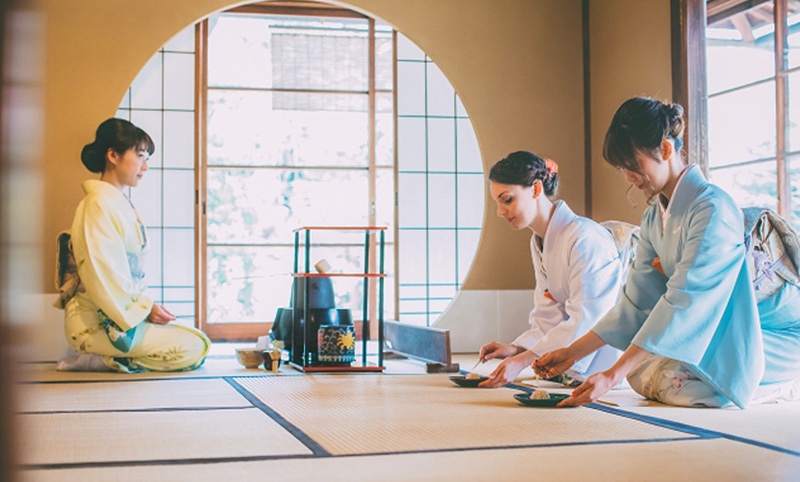The Tea Ceremony
Written by Sophia Amador

In Japanese, 茶道 (chadō, or sadō) is the ceremonial ritual of preparing and serving traditional Japanese green tea. Precious elements of Japan’s cultural history and traditions, matcha, powdered green tea, and the tea ceremony remain prevalent in the modern culture of Japanese society.
The history of the chadō dates back over a thousand years. It is a spiritual and artistic practice that emphasizes honor and respect for the guests that the tea is being served to.
A full ceremony that features a kaiseki(懐石), or a traditional multi-course Japanese dinner, and can last around 3 hours. Wagashi(和菓子), traditional Japanese sweets, accompany the matcha to balance out the bitterness.
Featuring a range of predefined movements, the procedure is intricately choreographed, with each motion having a specific purpose.
The experience is very meticulously designed, with each factor holding a purpose in constructing the atmosphere of the chado. It is a deeply emotionally complex tradition rooted in creating comfort between guest, host, and the environment.
Matcha was introduced from China as a medicinal beverage in the 8th century only to be consumed by priests and the upper class until the Muromachi Era (1333-1573), when it was spread to all social classes and tea parties were popularized.
At that time, the chado had come to develop its own principles of Wabi-sabi. Wabi-sabi is a type of Japanese art style characterized by wisdom in natural simplicity and flawed beauty. Nothing lasts, nothing is finished, and nothing is perfect.
Wabi has come to mean rustic simplicity, freshness or quietness, it represents the inner spiritual human experience.
Sabi is related to imperfection and the beauty in aging, weathering, decaying and represents the outer or the material outside world.
Wabi-sabi combined with zen simplicity and spiritual elements led to the creation of the modern tea ceremony that was spearheaded by Sen no Rikyu in the 16th century.
Sen no Rikyu is considered the father of the tea ceremony, and specifically wabi-cha, which emphasizes simplicity in the ceremony’s execution. He was a strong proponent of the concept of “ichi-go ichi-e”, or cherishing the impermanence of a single moment, which remains a vital part of the tea ceremony today.

Chashitsu(茶室), or tea rooms, are very meticulously designed in order to create the appropriate ambiance for the ceremony.
Tatami(畳), bamboo mats, are arranged in a specific placement such that the guest knows how to enter the chashitsu and where to sit.
Kakemono(掛物), hanging scrolls, showcase calligraphy that relate to the values of the chadō and are placed in the tokonoma(床の間), scroll alcove.
Chabana(茶花), a subsection of ikebana, refers to flower arrangement in chashitsu. They are typically very minimalistic and reflect the simplicity of the tea ceremony itself.
The chadō is still more relevant than ever in the 21st century because of its deep significance in Japanese history and the importance of the values it is rooted in.
It teaches the importance of savoring the present moment, and enjoying the simple pleasures in life, like a meal amongst friends.
The tea ceremony represents the core values that the culture of Japan treasures of patience, respect, and peace. These values are reflected in the Japanese people, through traditions that have withheld for generations.
Difficulty making the necessary change when dealing with Japanese business partners?
Schedule a call here:

Erich Ahorner
Erich Ahorner helps people enter the Japanese market and grow their businesses. He is an expert at helping people with market entry using online and offline methods and trying to break down necessary steps to make things simple to understand. If you're interested in growing your business or entering a new market to and increase sales then definitely reach out and request a free strategy session today.
Menu
